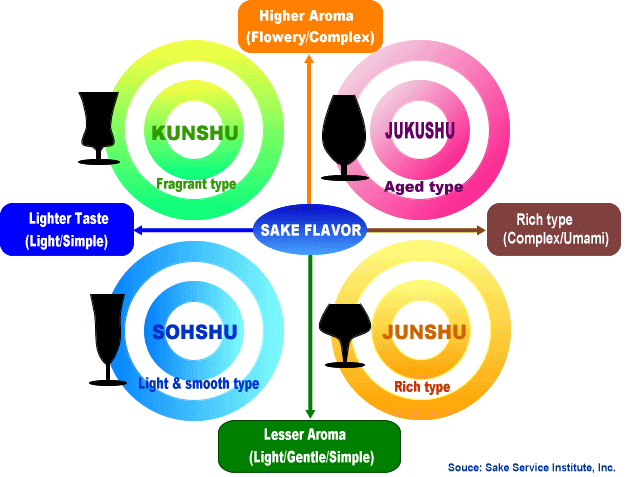 |
Highly fragrant (KUNSHU) |
| The principal characteristic is fresh fragrance. Chilling brings out crispness.
Care must be taken not to chill too much, as this will dull the glorious
bouquet and powerful elements such as acidity and bitterness may come to
the fore. If the fragrance is discreet and the umami componets are robust,
it can be enjoyed warm. |
|
 |
Light and smooth (SOHSHU) |
| Fresh, with a light, crisp texture. This type has a characteristic flavor
that is best developed by being thoroughly chilled. This sake has so few
sharp elements in its flavor that even when it is overly chilled, they
don't rise to the surface. Easily drinkable, and popular with every drinker. |
|
 |
Rich depth (JUNSHU) |
This has the widest drinking temperature range, and reveals the greatest
variation with changes in temperature. Because it has real depth an robust
umami, it is important to give these elements full play. To get the best
from the rounded umami, slightly hot temperatures are recommended.
This is great sake to savor slowly. |
|
 |
Matured (JUKUSHU) |
| This category covers a broad range of drinks from light to rich with the
optimum temperature varying widly for each, but as a rule of thumb the
heavir the umami, the higher the temperature should be. That said, opinion
is split on this type. Those who attach importance to temperature settings
tend to enjoy this type at the warmer end of the scale. Those less concerned
with temperature tend to prefer to drink it cooler, the strong fragrance
and umami are suppressed, making it easier to drink. |




